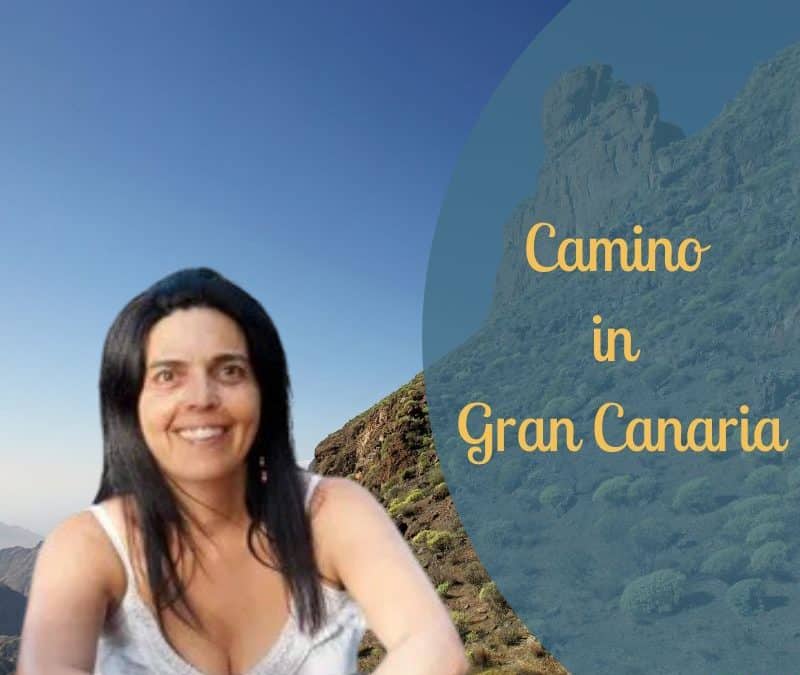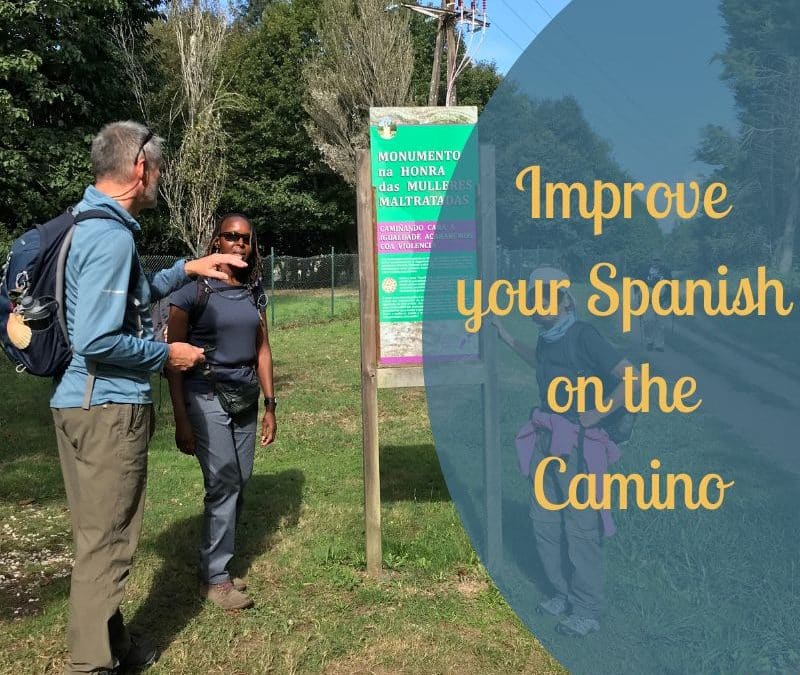
Camino in Gran Canaria
Spanish teacher Marina Rodríguez, from La Lengua de Babel, is from the Canary Islands and specialises in the Spanish spoken there.
She joined me in the podcast to tell us all about the Camino in Gran Canaria.
This blog post is an English version of the conversation we had in Spanish.
If you prefer to listen, you can do so here:
Why is there a Camino in Gran Canaria?
According to Marina, there are 2 reasons, both going back to the 15th century, when the Kingdom of Castile conquered the Canary Islands first and the Americas later.
The first reason:
After the conquest, the Canary Islands became a part of many Spanish shipping routes. According to legend, a boat with Galician sailors was sailing along the southern coast of Gran Canaria when they were hit by a storm. The sailors were carrying a statue of St. James, so they prayed to him and made a promise: if they survived, they would build a small church on the highest land they saw right after the storm.
They survived and the first place they saw was Tirajana, one of the highest points on the Gran Canaria island. So they carried the statue of St. James from Arguineguín, on the southern coast, to the top of the mountain, where they built a small church as promised. This church became a pilgrimage site, but in 1850 the statue of St. James was moved to another town called Tunte.
The second reason takes us to Gáldar, in the north of the island.
Right from the beginning, the Castilian conquerors started celebrating mass in the islands, and the first church they built was devoted to St. James. This happened around the same time as the story of the Galician sailors.
Centuries later, in 1965, a papal bull awarded Gáldar the priviledge of celebrating St. James Holy Year under the same conditions enjoyed at Santiago de Compostela. It was meant to be an exceptional occurence, but it became permanent in 1993.
Stages of the Camino de Gran Canaria
The Camino in Gran Canaria joins the stories of the Galician sailors and the Santiago church in Gáldar. It goes from the south, close to where the Galician sailors landed, to the templo jacobeo de Santiago de los Caballeros de Gáldar, the church of Santiago in Gáldar in the north.
Officially this Camino has 3 stages and covers a distance of 66 km. The difficulty of this route is medium-high.
It’s not a good idea to walk it in the summer, because it’s too hot. It can also be dangerous when it’s raining, because of all the cliffs and steep slopes.
Stage 1: Maspalomas – Tunte
28 km from the Maspalomas (close to Arguineguín) to Tunte. This stage follows, more or less, the route that the Galician sailors took after the storm. You start by the sea, at the Maspalomas lighthouse, and you climb up to 1000 m, so you will see the landscape change as you climb. You’ll walk through a national park, and there are not many towns on this section, apart from the villages of Artenara and Fataga. In Artenara there is an indigenous cemetery with around 800 graves. In Fataga, on the other hand, you can see the typical architecture of the Canary Islands.
Stage 2: Tunte – Cruz de Tejeda
17 km of ascent from Tune to Cruz de Tejeda. Another beautiful but difficult stage with cliffs, ravines, caves… and something else: calderas. Calderas are volcanic craters that have collapsed, so there’s only part of the volcano. You will see several on this stage.
Stage 3: Cruz de Tejeda – Gáldar
21 km of descent into Gáldar, where the other church of Santiago is located. There are some indigenous remains on this stage too. And the “firefighter-sheep”. In recent years, shepherding has been reintroduced in the Canary Islands, mainly as a way to prevent fires. So, as you walk down into Gáldar, you’ll see the so-called ovejas-bombero (“firefighter-sheep”).
The Camino as a social project
In 2027, a judge in the Canary Islands had the idea to send young people who had committed a crime to walk the Camino instead of a detention centre. She thought that the Camino could teach them values like sportsmanship, respect, perseverance, etc.
It started as a pilot project, but the results were fantastic, so it’s been happening since then. There is now an association that organizes a Camino every year for young people with different problems, not just with justice. They also use the opportunity to raise funds for different causes. In most cases, it has been a very successful experience.
Want more?
Make sure you don’t miss any posts or announcements by subscribing for free here. You’ll receive the transcripts + vocabulary guides + interactive exercises of episodes 1-5 of the Spanish for the Camino podcast. And… you’ll get access to exclusive content too.






